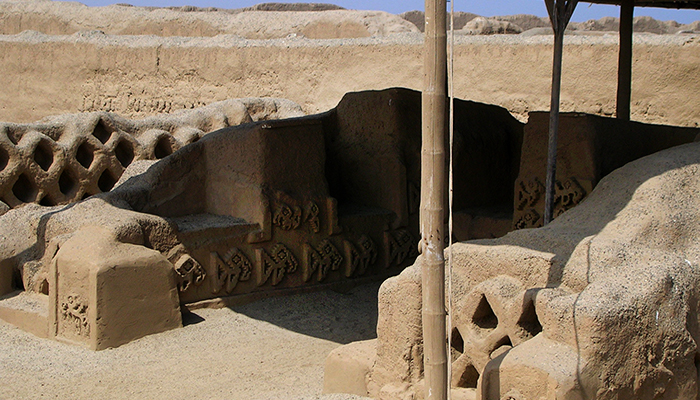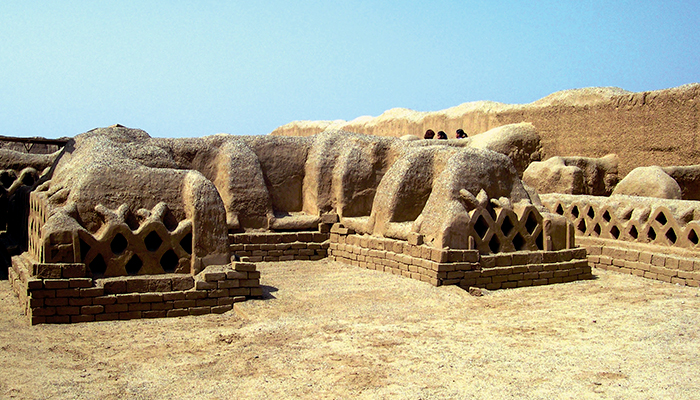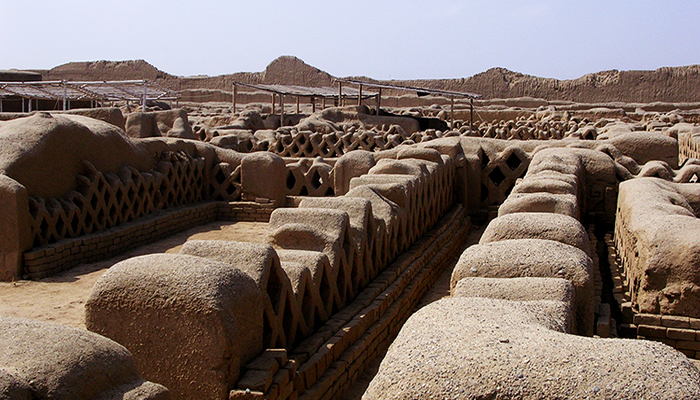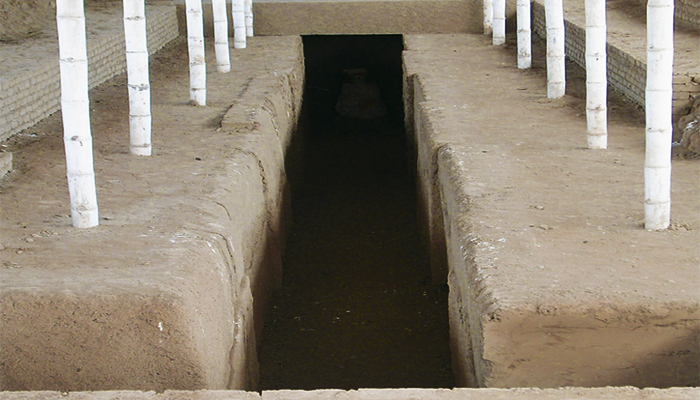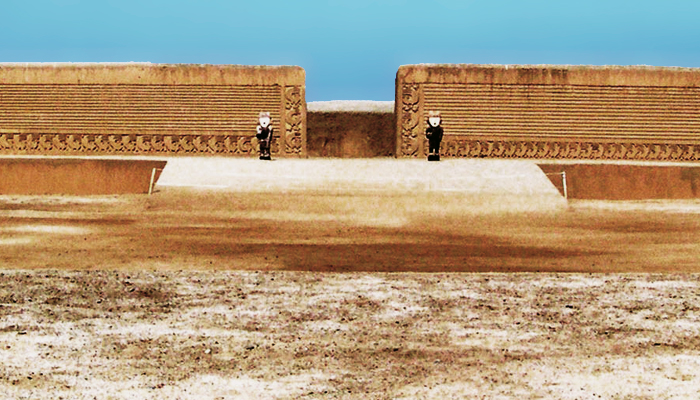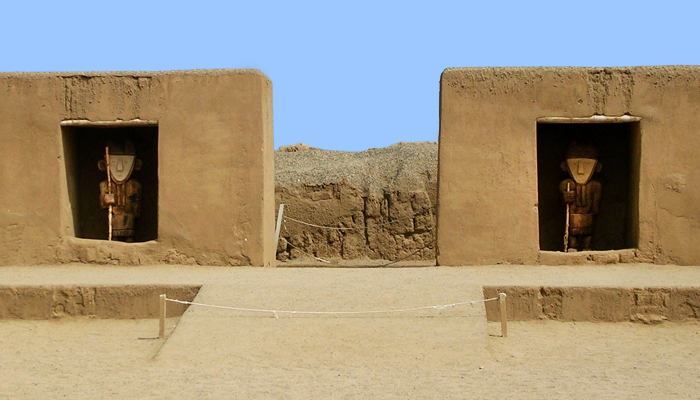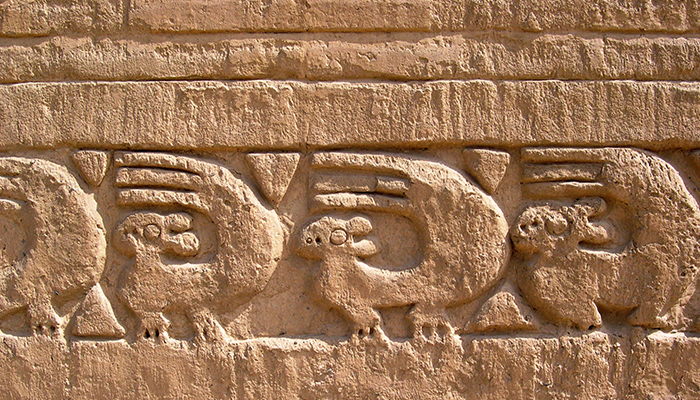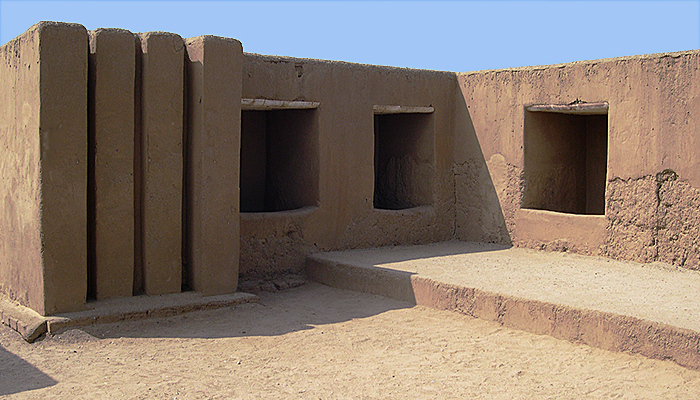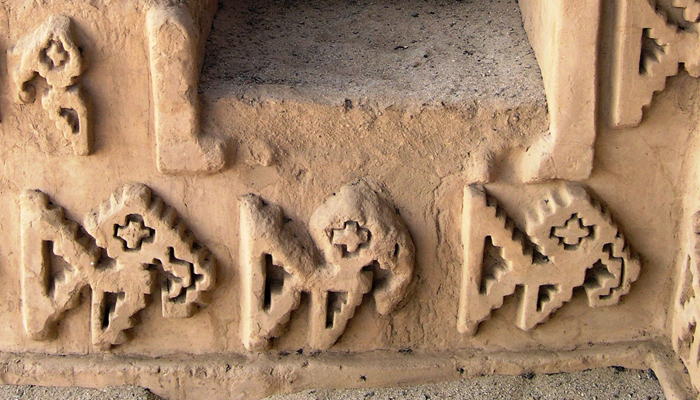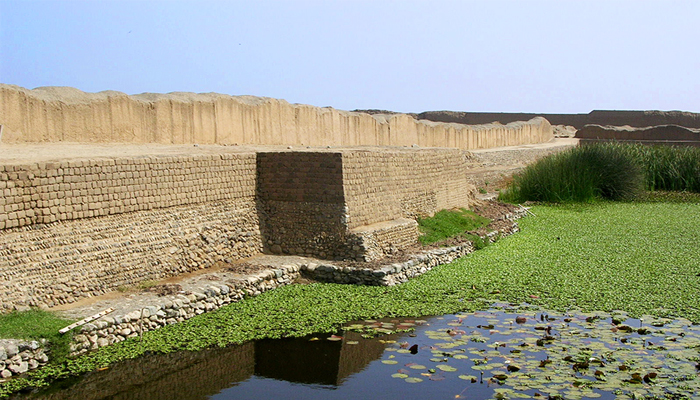Chimu, Labyrinths of a sacred costume
The forbidden compounds
A labyrinth of narrow corridors, flanked by tall adobe walls that blocked all vision, communicated with the different interior sectors of the eleven monumental royal palace compounds of Chan Chan. Each compound contained an initial sector with large walled plazas reached by ramps, a proscenium with wooden statues set into the adjacent adobe walls. The most important civic-religious ceremonies were carried out here.
In the second sector, there were dozens of U-shaped rooms, with geometric and animal designs beautifully carved into the walls. Some rooms were used as official deposits where valuable articles were stored. Others, known as audiencias, served as administrative offices where the treasures of the realm were redistributed among the members of the elite. A cistern or reservoir, filled with plants and fish, was also located in this sector. It was the source of drinking water for the residents.
The third sector was the most secluded and private within the compound. It housed the sacred funeral platform, which was reached by a lateral ramp. The remains of the Ci Quic, or the most-recently deceased Emperor, lay in a T-shaped tomb. The kitchens and chicherías, where the local beverage, chicha, was available, were located behind this enclosure, as were the homes of servants.
Each compound, in its moment, had been the principal seat of government and the redistribution center of kingdom’s riches. When power passed to a new ruler, he built his own palace, and the descendents of deceased ruler continued to use the compound of their deceased relative, retaining part of their political and, more importantly, economic functions.





































